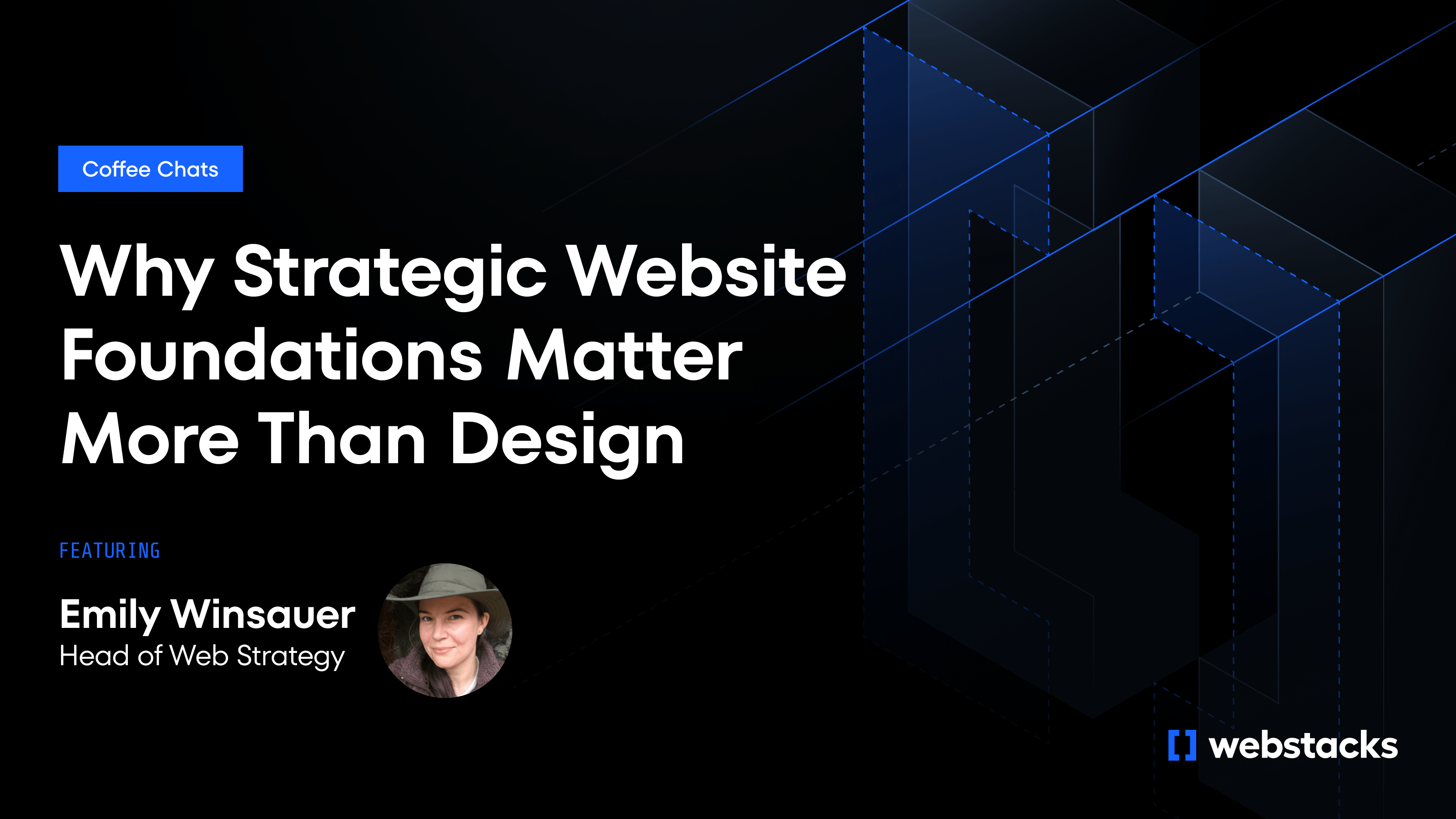Your marketing team discovers a pricing error on your homepage that's costing thousands in lost conversions. It's a simple fix—changing "30% off" to "40% off"—but it requires a full code deployment. That means waiting three weeks for the next release window while the development team finishes testing an unrelated checkout feature.
This isn't an isolated incident. Across enterprise organizations, teams are trapped in coordination paralysis where every change, no matter how trivial, becomes a cross-departmental project. Content updates wait behind feature releases. Critical bug fixes get delayed by marketing campaigns. Simple text changes require developer time, QA cycles, and deployment coordination that can stretch a five-minute edit into a three-week ordeal.

Why Monoliths Create These Bottlenecks
Understanding the solution requires diagnosing why monolithic architectures generate these coordination problems. The root causes are structural, not procedural:
Tight Coupling
In monolithic systems, components share code, databases, and business logic. Changing the product catalog affects the checkout process, which impacts the recommendation engine, creating a web of dependencies that make isolated changes impossible.
Shared Deployment Pipelines
Every change, regardless of scope, must pass through the same testing and deployment process. A simple content update gets queued behind complex feature development, forcing artificial coordination between unrelated work streams.
Cascade Dependencies
When one component fails or needs updating, it can block or break seemingly unrelated functionality. This interdependence makes teams risk-averse and slows innovation as the blast radius of any change becomes unpredictable.
Resource Contention
During traffic spikes, the entire system must scale together, even if only the search functionality is experiencing load. This inflexibility drives up infrastructure costs and reduces performance optimization options.
Breaking Free from Monolithic Constraints with Composable Architecture
Composable architecture fundamentally changes this dynamic by breaking your digital platform into modular, API-connected services. Instead of one massive system, you build with discrete components—each handling a specific function while communicating through well-defined interfaces.
This architectural shift delivers three core advantages that directly impact enterprise scale:
Independent Deployment Cycles
Each component ships on its own schedule. Your content team can push blog updates while your product team deploys new features and your marketing team launches campaigns—all without coordination overhead.
Targeted Scaling
During traffic spikes, you can add compute resources only to your checkout and search services while leaving everything else unchanged. This precision typically reduces infrastructure costs compared to scaling entire monolithic systems.
Vendor Flexibility
When a better analytics tool emerges, you can integrate it during a two-week sprint instead of planning a six-month platform migration. This agility becomes crucial as your technology needs evolve.
The Four Pillars of Composable Architecture
Understanding how to structure composable systems requires focusing on four key pillars that work together to create scalable, flexible digital experiences. Each pillar serves a distinct purpose while integrating seamlessly with the others through standardized interfaces.
Business Capability Services
These services handle discrete business functions like pricing, product catalog, checkout, user authentication, and order management. Each service owns its complete business domain—data, logic, and processes—enabling teams to modify pricing rules or catalog structures without touching other systems. A global B2B manufacturer migrated their legacy product catalog by replacing one service at a time over several months, maintaining full site functionality throughout the transition.
Platform Services
Platform services provide the technical foundation that business capabilities depend on: authentication, logging, monitoring, security, and data analytics. These shared services prevent each business capability from reinventing common technical functions while maintaining the independence needed for autonomous development. Your user authentication service, for example, provides identity management for all business services without creating deployment dependencies.
Integration Layer
Clean, well-documented APIs and message queues enable your services to communicate without hidden dependencies. This contract-based approach lets legacy systems coexist with new SaaS tools while maintaining data consistency. Consider how your marketing automation platform needs customer data from your CRM, purchase history from your commerce system, and behavioral data from your analytics tool—the integration layer creates these connections without custom point-to-point integrations.
Presentation Layer
A headless CMS and frontend frameworks separate content creation from presentation, storing structured content that APIs can deliver to any channel—web, mobile, in-store kiosks, or future touchpoints. Your content team creates product descriptions once, and automated systems distribute them across all customer touchpoints while maintaining consistency and enabling channel-specific optimization.

Governance that Balances Autonomy with Consistency
Composable architecture requires evolved governance models that balance team autonomy with system-wide consistency. Traditional governance approaches that rely on centralized control become bottlenecks when components are developed and deployed independently. The key is establishing automated guardrails and shared standards that enable teams to move quickly while maintaining quality.
Component Libraries and Design Systems
Establish shared UI components and design systems that teams can use independently while maintaining brand consistency. Pre-approved components enable self-service page creation without sacrificing brand standards. This shared foundation reduces development time while ensuring cohesive user experiences across all touchpoints.
API Standards and Contracts
Define clear contracts for how services communicate, including authentication, error handling, data formats, and versioning strategies. This standardization prevents integration chaos as your component ecosystem grows. Teams gain autonomy within these guardrails while maintaining system-wide compatibility.
Automated Quality Gates
Implement automated testing and deployment processes for each component, ensuring quality while enabling rapid iteration. These pipelines should include security scanning, performance testing, and compatibility checks that prevent problematic deployments without manual bottlenecks.
Observability and Monitoring
Each component should expose health metrics, performance data, and business KPIs through standardized interfaces. This visibility enables proactive optimization and rapid issue resolution while providing the data needed for informed architectural decisions.
How to Transition from Monolith to Composable Architecture
The transition to composable architecture requires a phased approach that minimizes risk while delivering incremental value. Most organizations underestimate the coordination required across development, operations, and business teams during this transformation. Success depends on establishing clear migration priorities, maintaining system stability throughout the process, and building internal expertise progressively.
Phase 1: Identify and Extract High-Value Components (Months 1-3)
Start with components that satisfy three criteria: high change frequency, significant business impact, and moderate technical complexity. Content management systems and customer-facing features like search or product recommendations often provide the highest ROI for early extraction. This approach builds confidence and demonstrates value while teams develop composable development practices.
Phase 2: Build Integration Infrastructure (Months 2-4)
Develop the communication infrastructure that will connect your new components. This includes API gateways, authentication systems, data synchronization protocols, and monitoring tools. Building this foundation in parallel with component extraction creates the platform needed for subsequent migrations while minimizing timeline dependencies.
Phase 3: Systematic Service Migration (Months 4-12)
Move components systematically, prioritizing based on business value and technical feasibility. Each migration should improve a specific business metric—faster deployments, reduced downtime, or improved performance. This phase builds organizational expertise and confidence while delivering measurable improvements that justify continued investment.
Phase 4: Optimize and Scale (Ongoing)
With core components migrated, focus on performance optimization, cost management, and adding new capabilities that leverage your composable foundation. This phase emphasizes continuous improvement and innovation rather than migration, marking the transition to a truly composable operating model.
Key Metrics for Measuring Composable Architecture Success
Composable architecture's value becomes evident through specific, measurable improvements that impact both technical operations and business outcomes. Unlike monolithic systems where performance bottlenecks are difficult to isolate, composable systems provide granular visibility into each component's contribution to overall system health.
Deployment Frequency
Organizations typically see deployment frequency increase from monthly to weekly or daily cycles, with some achieving multiple deployments per day for individual components. This metric directly correlates with business agility and time-to-market improvements.
Mean Time to Recovery (MTTR)
When issues occur, you can isolate and fix individual components without taking the entire system offline. This often reduces MTTR from hours to minutes, significantly improving customer experience and reducing revenue impact.
Development Velocity
Teams often report significantly faster feature delivery once they can work independently on isolated components without coordination overhead. This improvement compounds over time as teams optimize their individual development processes.
Infrastructure Efficiency
Targeted scaling and improved resource utilization typically deliver substantial infrastructure savings while improving performance under load conditions.
Building Your Composable Future
Composable architecture transforms how enterprise teams build, deploy, and scale digital experiences by removing the coordination bottlenecks that plague monolithic systems. Success depends on viewing composability not as a technology choice, but as a strategic capability that enables continuous adaptation to changing market demands.
The transformation requires discipline in governance, thoughtful migration planning, and commitment to new operational practices. However, organizations that successfully implement composable architectures gain sustainable competitive advantages through improved agility, reduced operational friction, and the ability to integrate best-of-breed solutions as they emerge.
Ready to explore how composable architecture could transform your digital operations? Webstacks specializes in helping enterprises navigate this transition with proven methodologies and technology-agnostic expertise. Our team can assess your current architecture, identify high-value migration opportunities, and create a roadmap that delivers measurable business value.
Schedule a consultation with our architects to discuss your specific requirements and get a customized assessment of your composable readiness.




